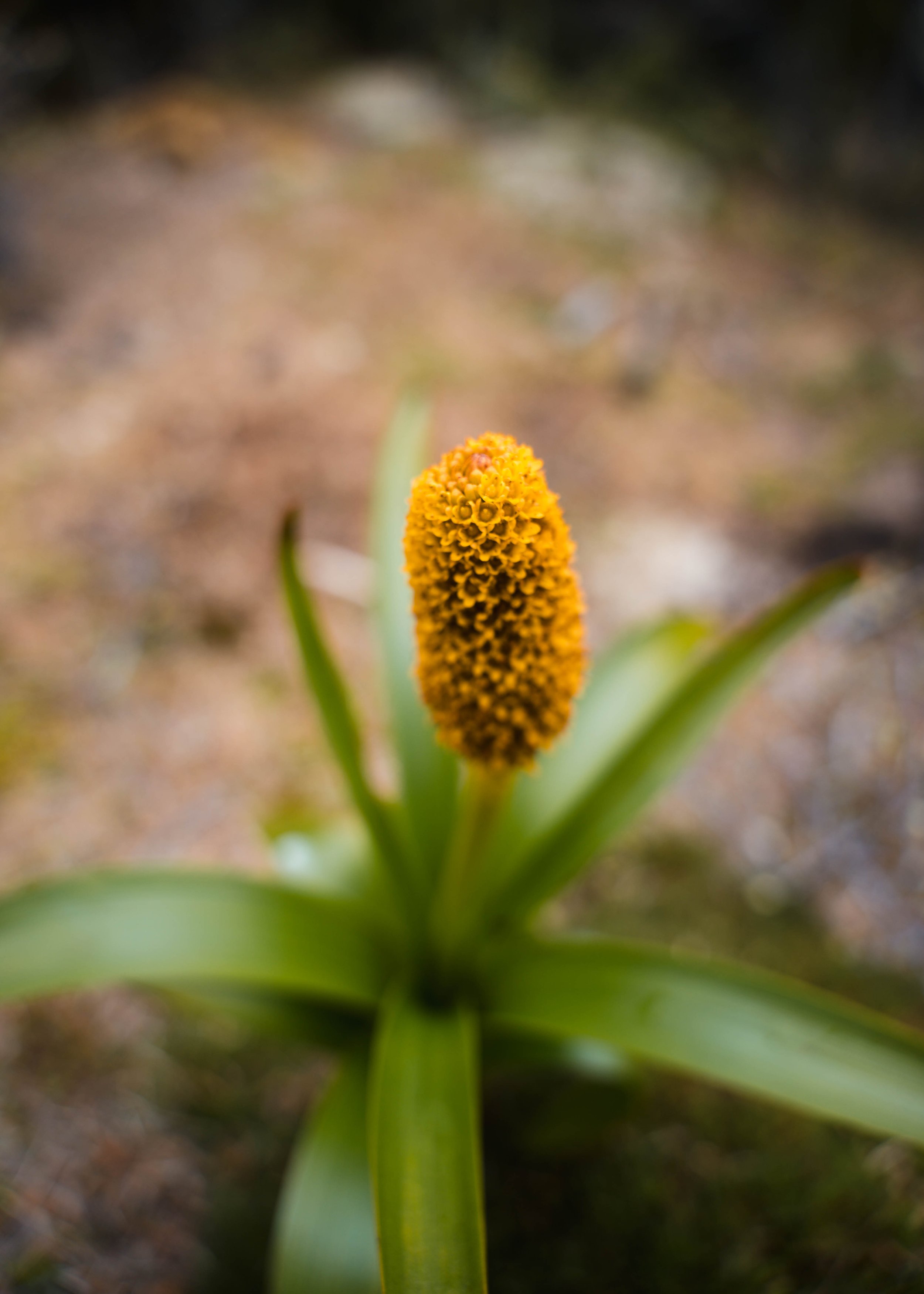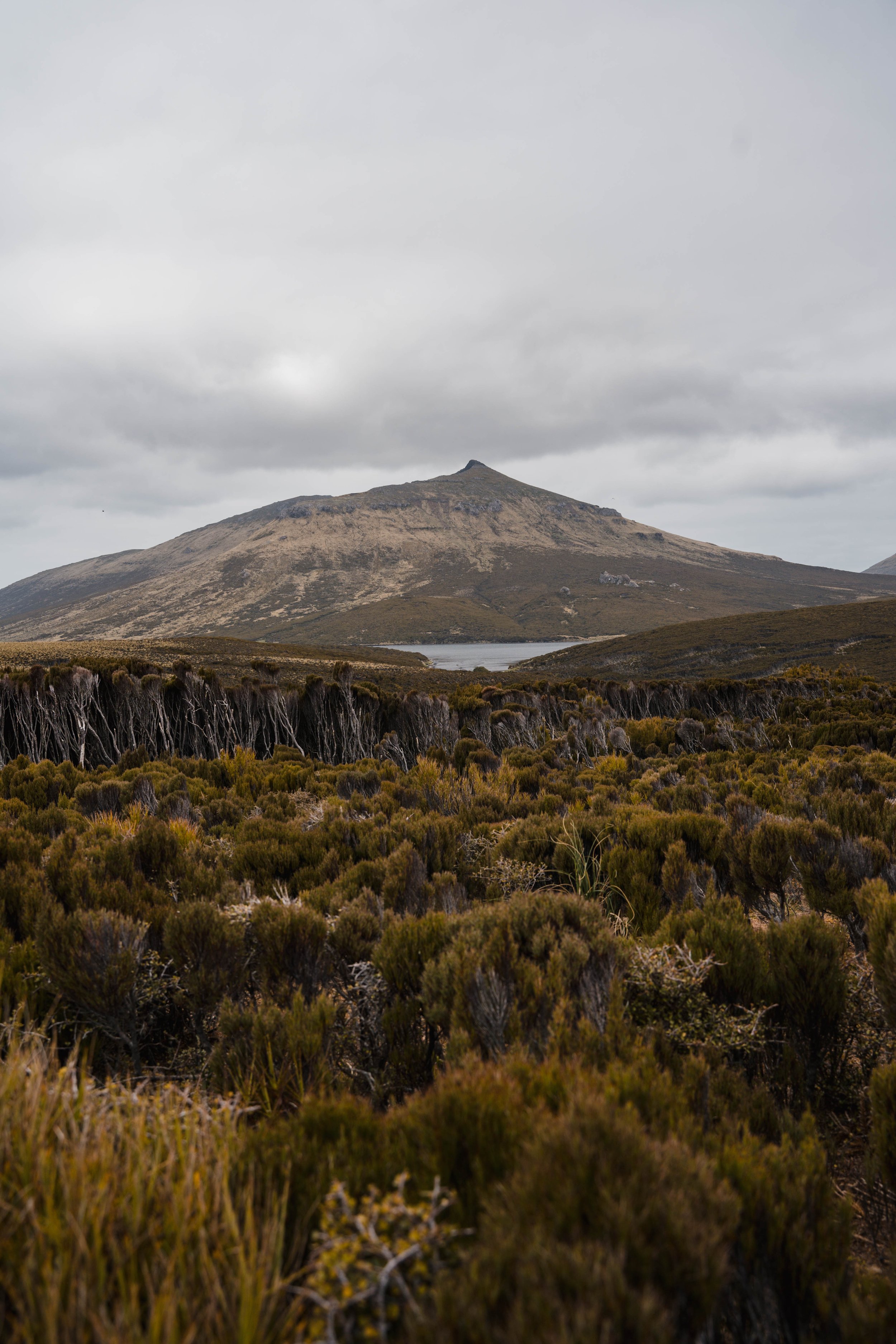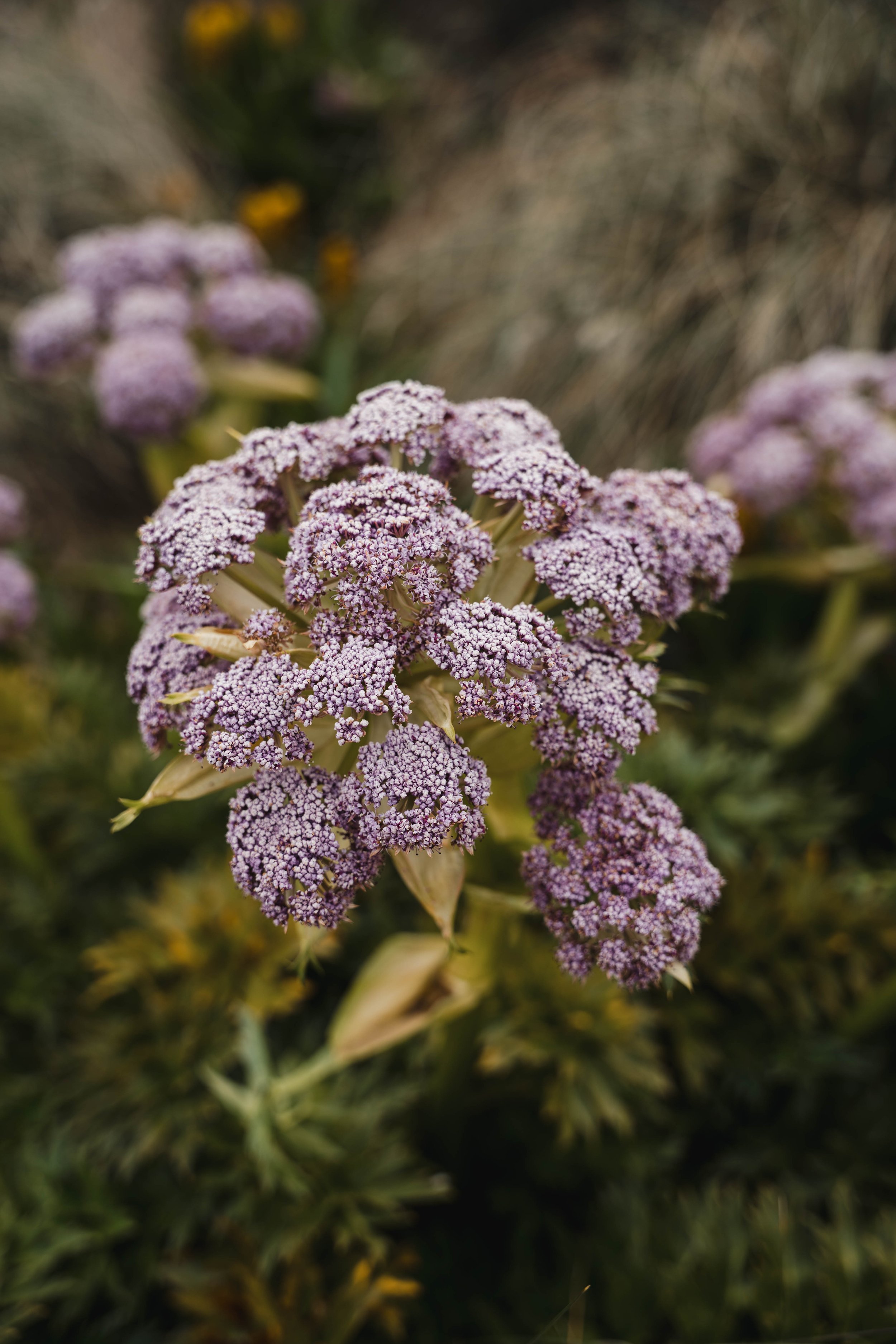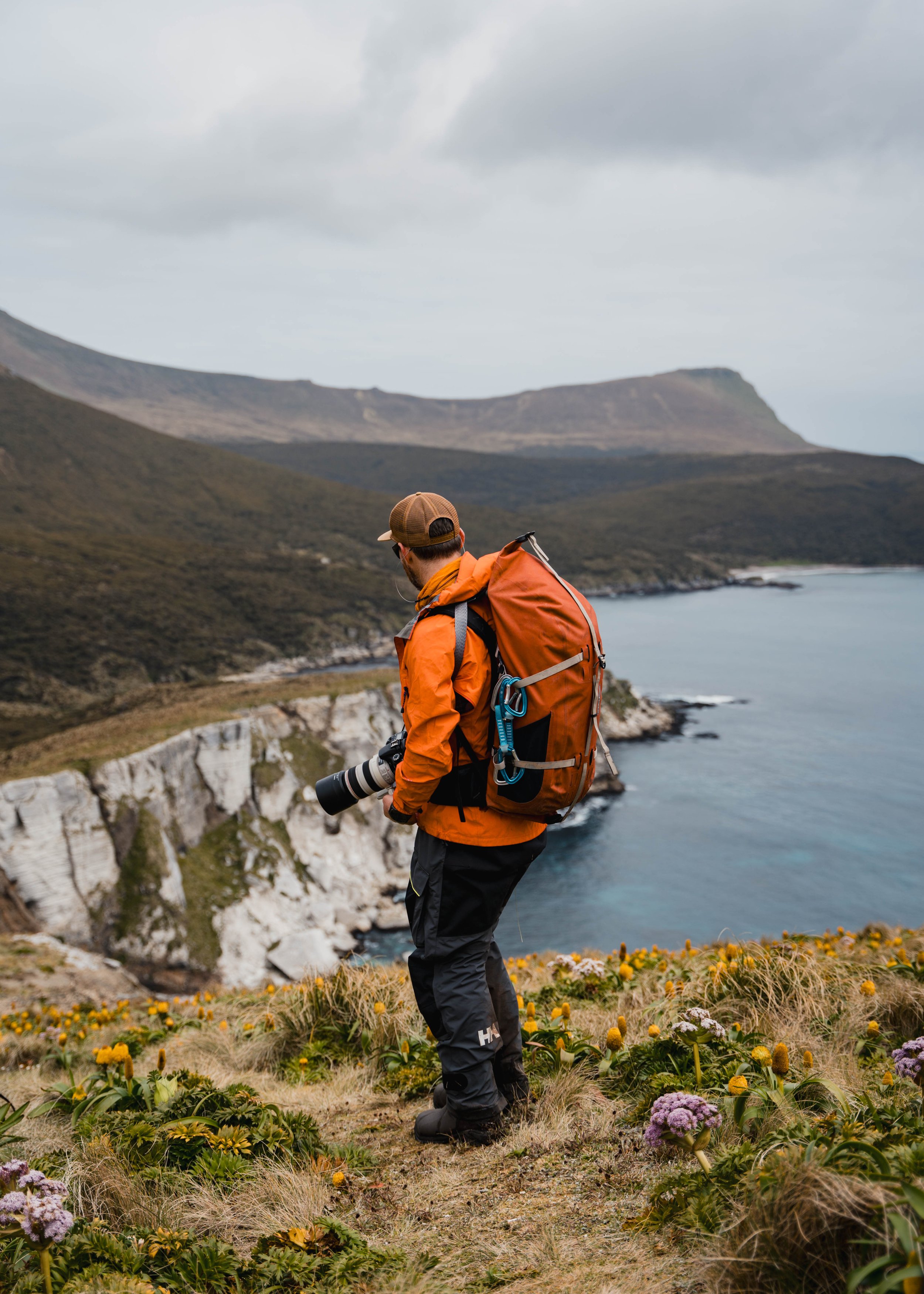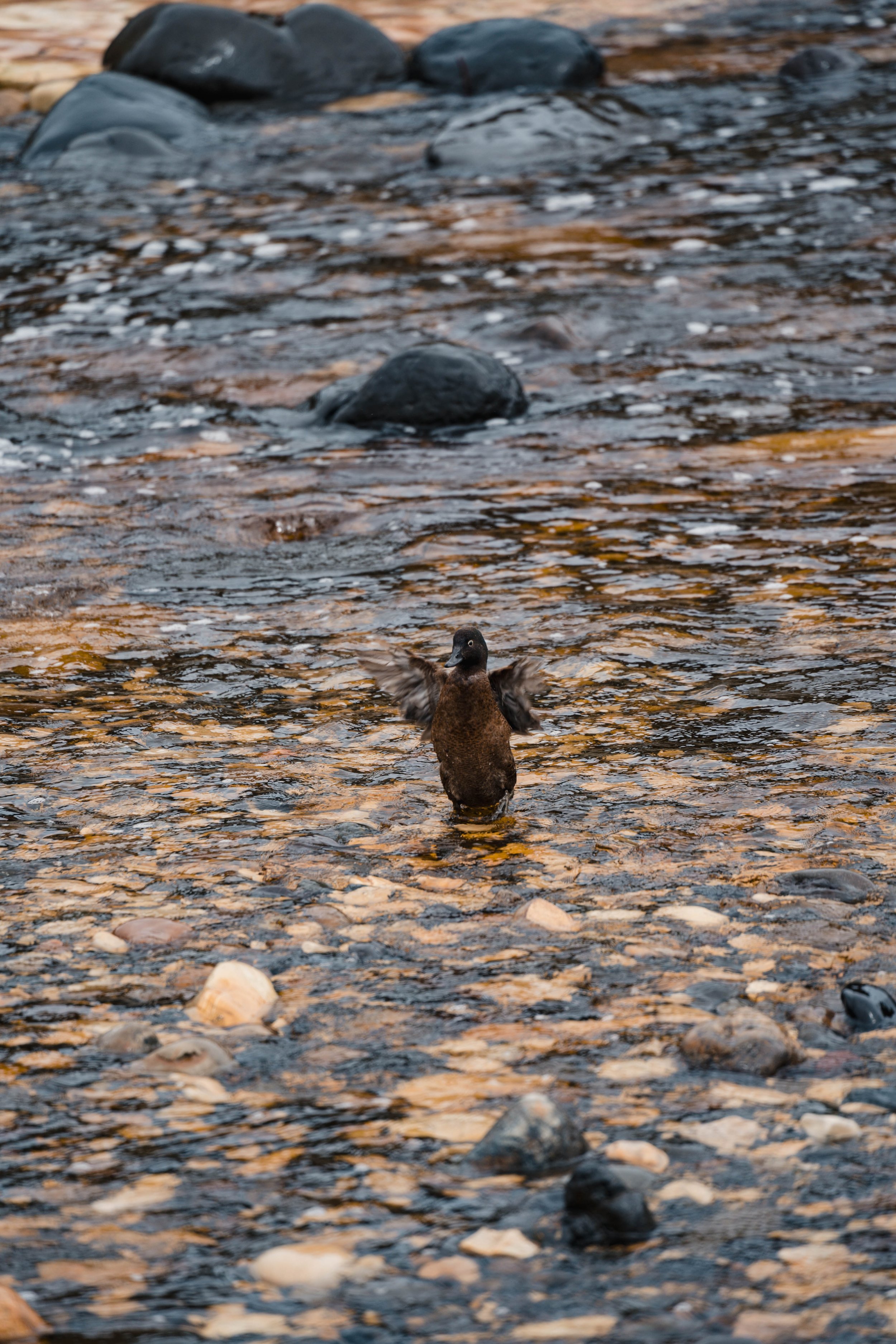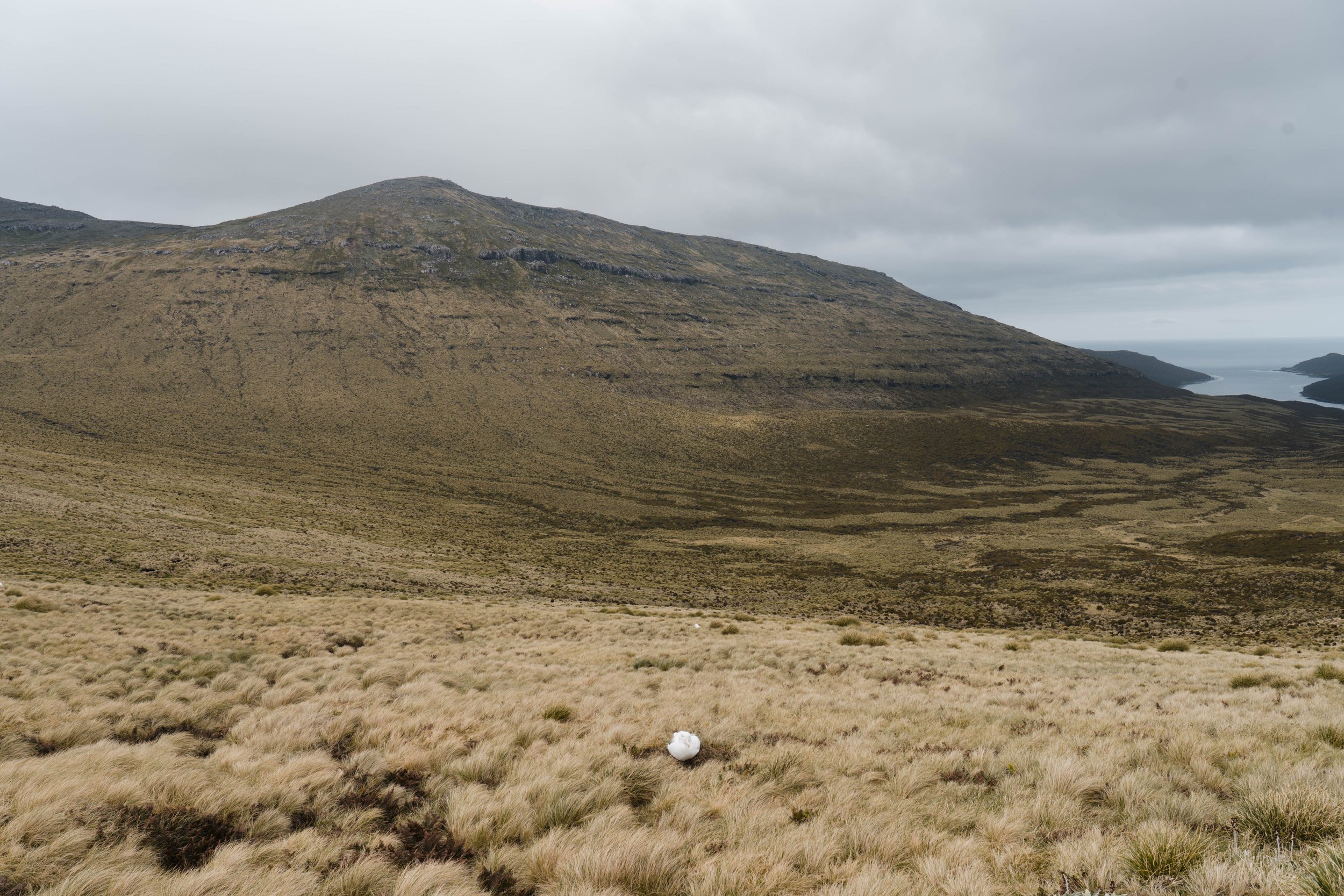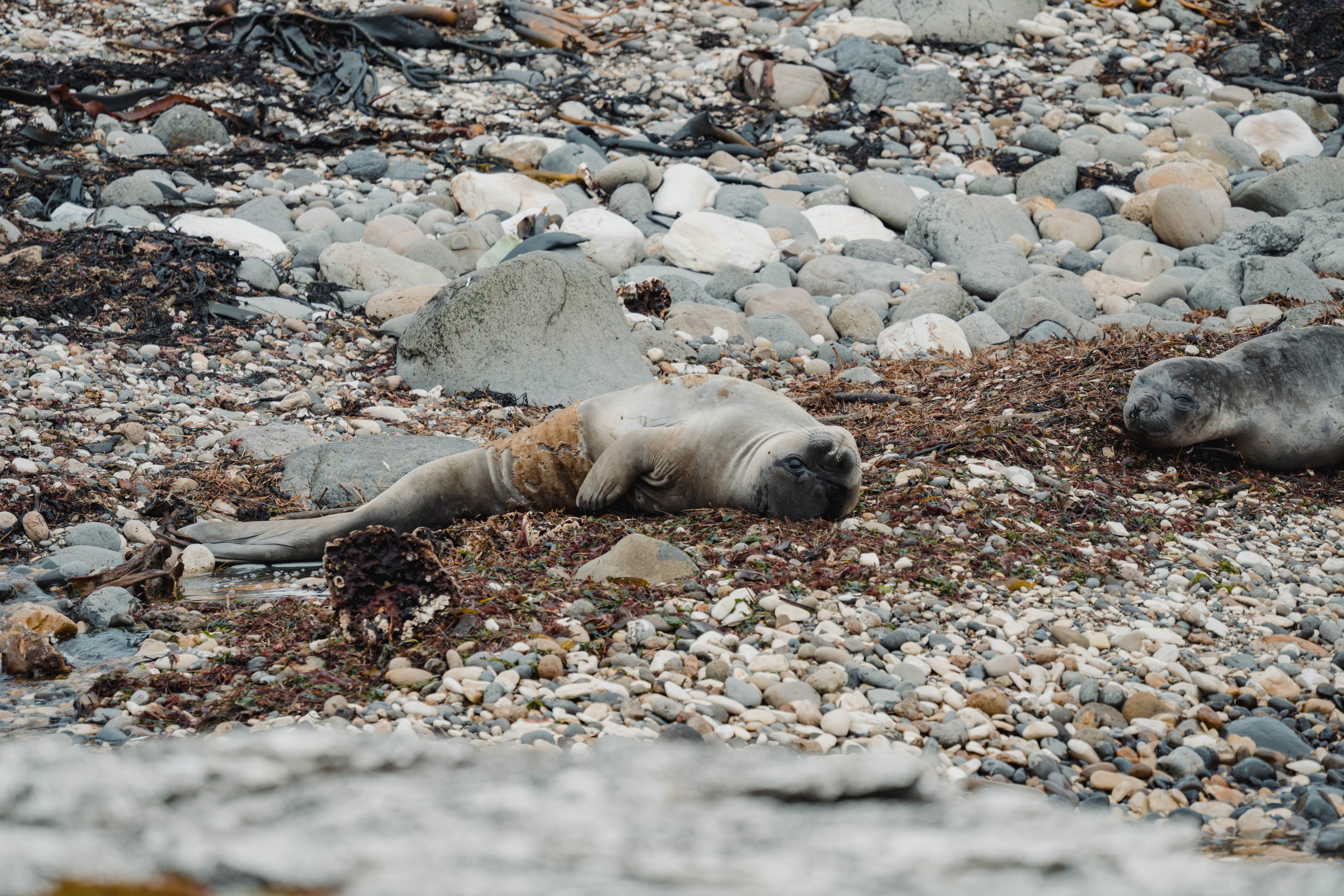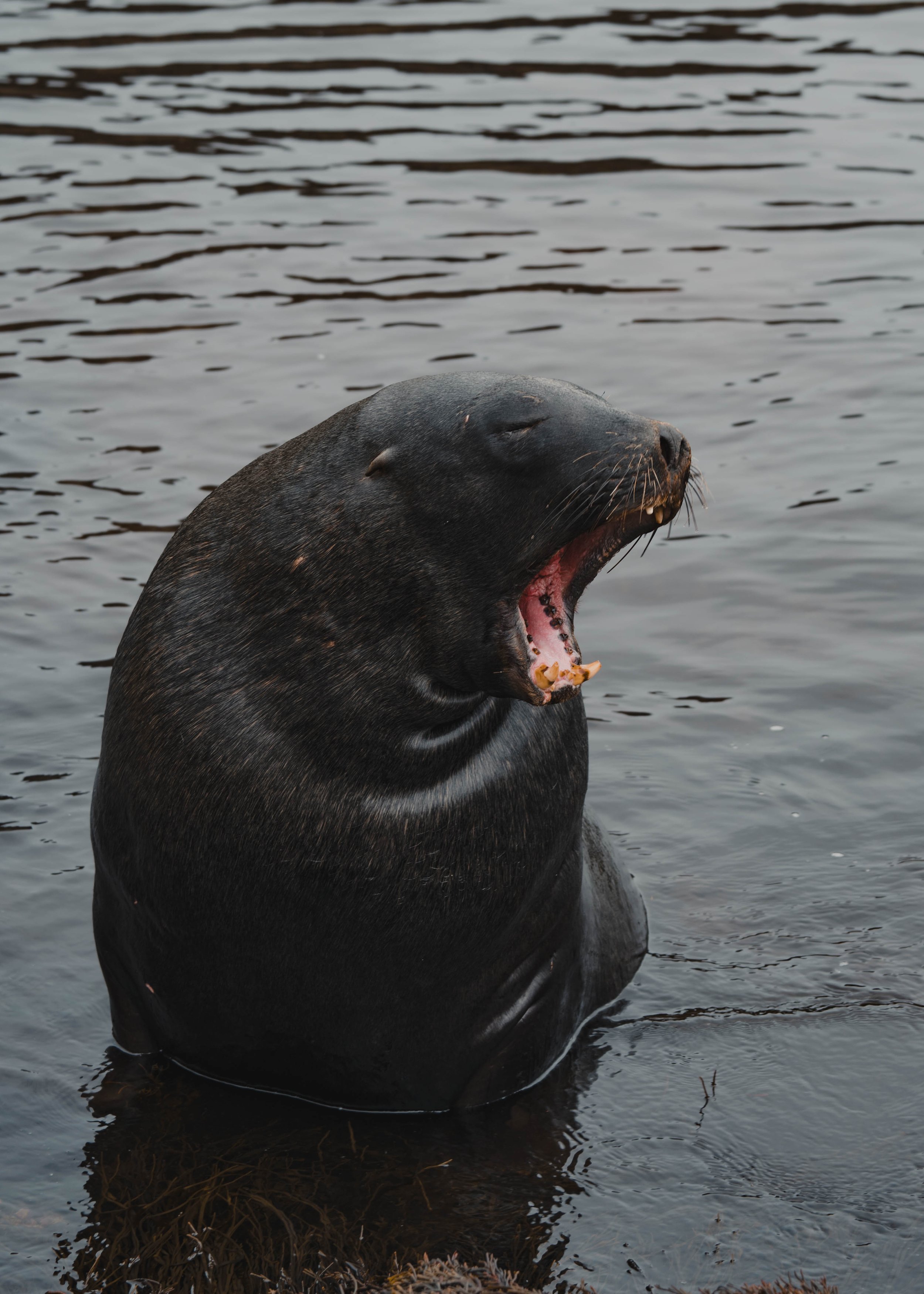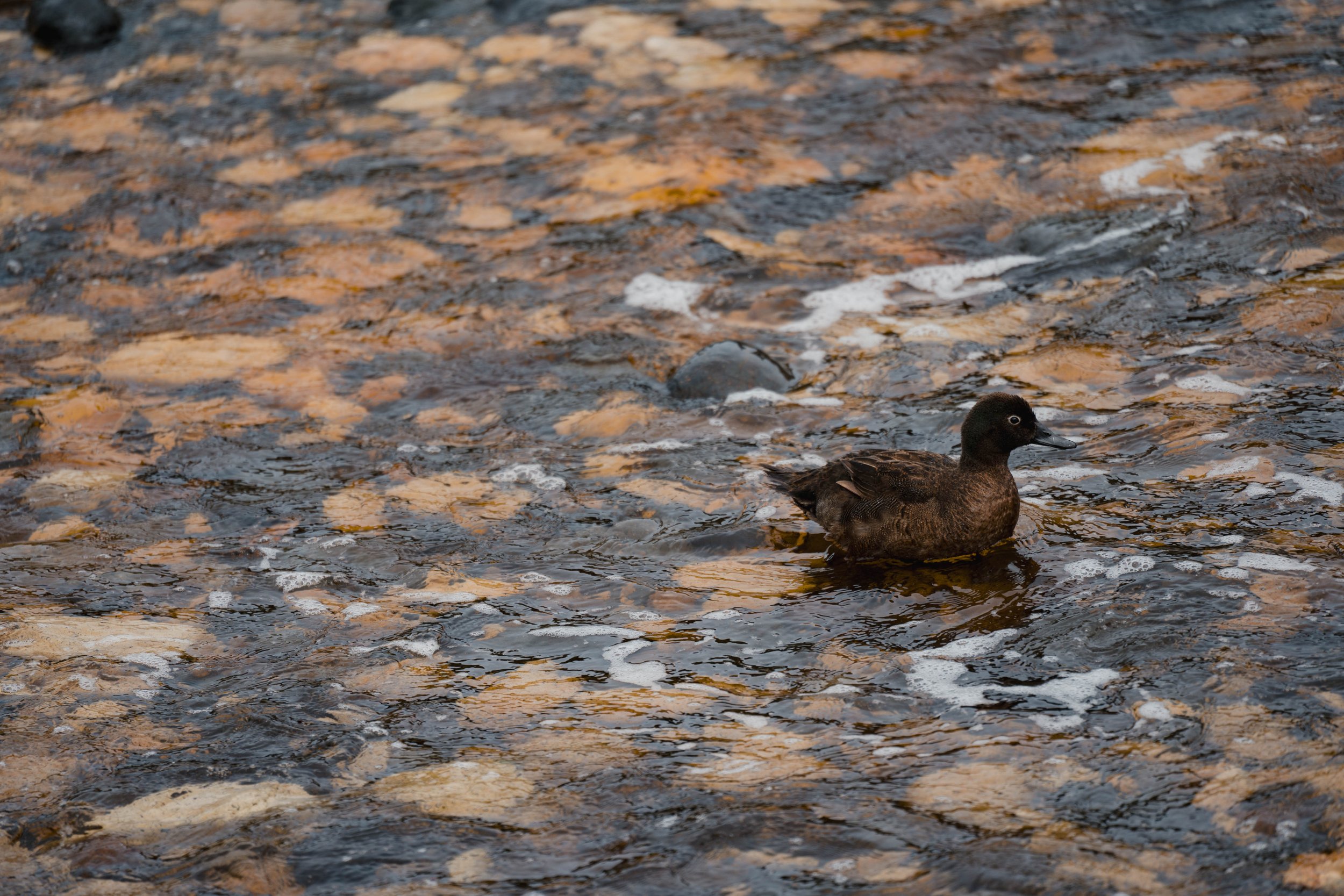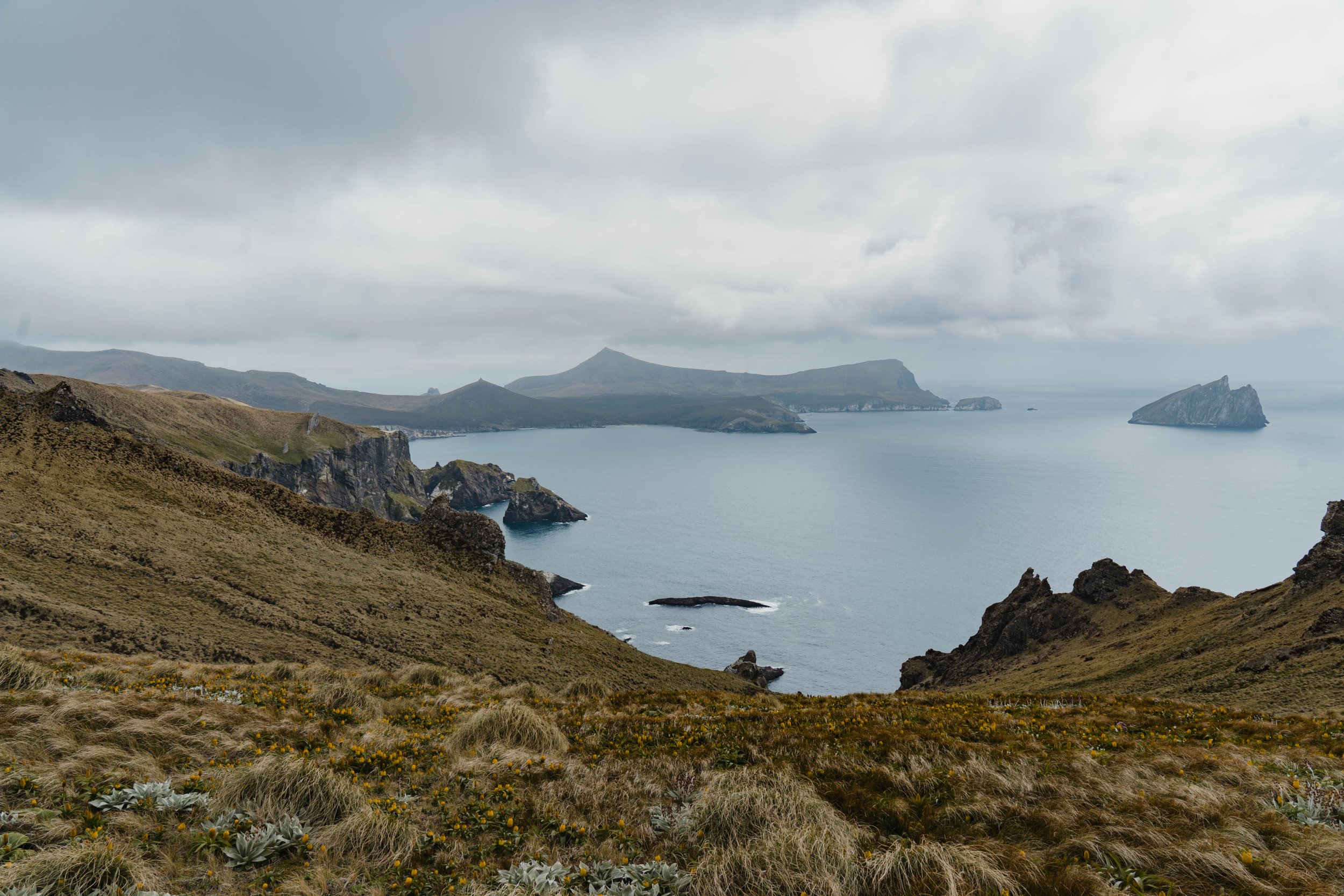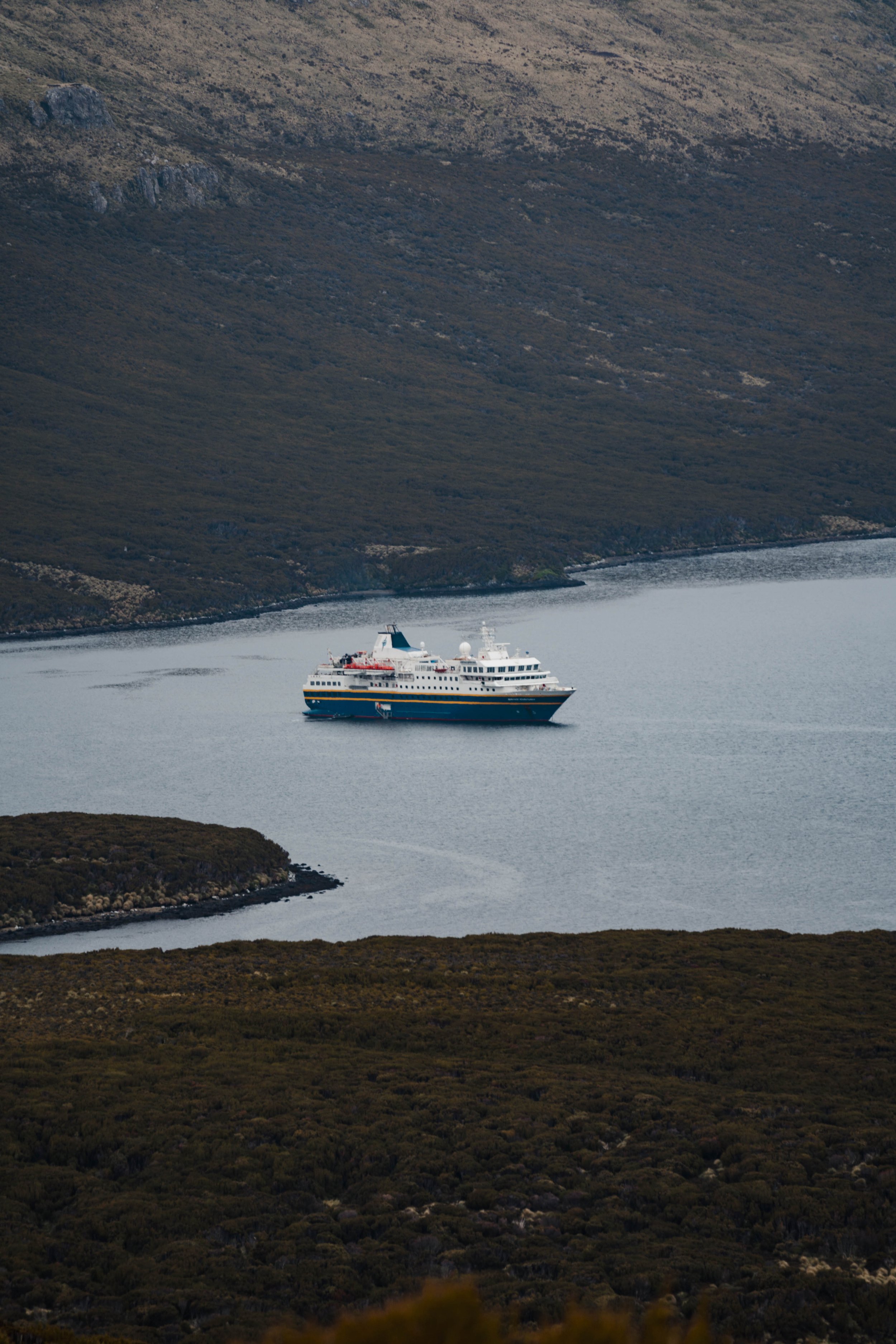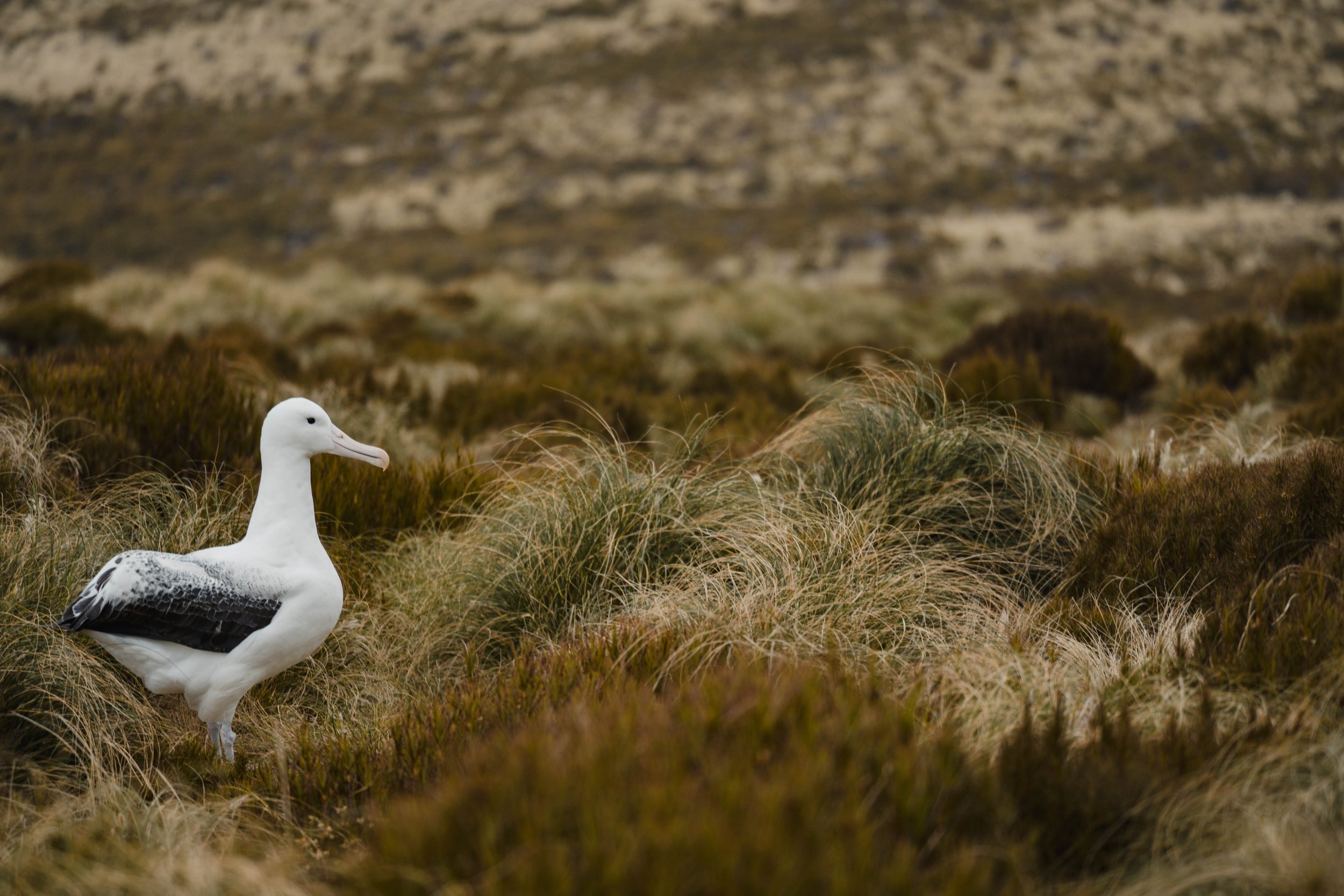
CAMPBELL ISLAND
After 1.5 days at sea we made our way to the southern most point of the expedition. Situated 700km south of the bottom of the New Zealand mainland, Campbell Island features a number of endemic species including sea & land dwelling birds as well as various mega-herbs. The North West bay walk is the largest trail (13km) available for a small number of tourists following strict biosecurity measures.
The walk winds it’s way up the tussock and megaherb hills, across sea cliffs with nesting Skua before dropping down to North West Bay. Residents at North West Bay include Elephant Seal pups, curious young male Sea Lions, Pippits, Campbell island Teal and Hoiho (yellow eyed penguins). Continuing back up through more megaherbs to complete the loop at ‘the worlds loneliest tree’ nesting Southern Royal Albatross can be seen gamming and a keen eye can catch a glimpse of the Campbell Island Snipe, a close relative of the now extinct South Island Snipe.
Although now re-wilding, Campbell island has a checkered past with failed attempts to run livestock in the 1800’s resulting in damage to the islands unique and ancient vegetation. The introduction of rats also had a huge impact on the native bird life with many endemic species being pushed to the brink of extinction. On our particular walk we were lucky enough to be guided by Lindsay from Heritage Expeditions, who in 2001 was part of the rodent eradication team. Using systematic aerial bating and newly developed radar technology the project was a huge sucess. A blue print from the Campbell island pest eradication was then developed and used in other places such as Tasmania’s Sub Antarctic island (Macquarie Is.) and is now the basis of Aotearoa’s/New Zealand’s predator free 2050 nationwide target.
An awe inspiring experience, I’d encourage anyone to witness this remote part of our backyard through Heritage Expeditions. People from places such as Lutruwita/Tasmania and Aotearoa/New Zealand are fortunate enough to feel somewhat at home in these wild uninhabited islands.

